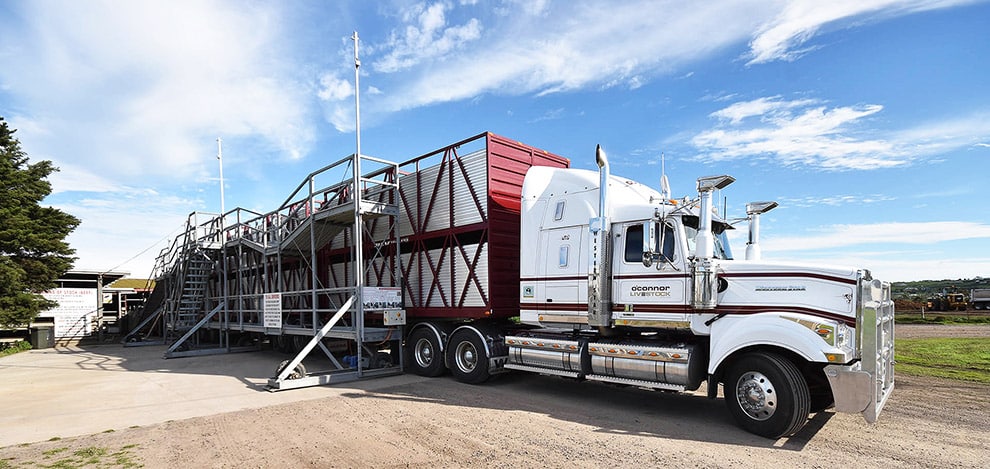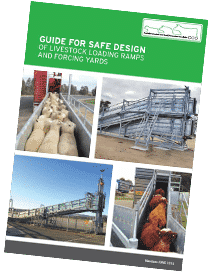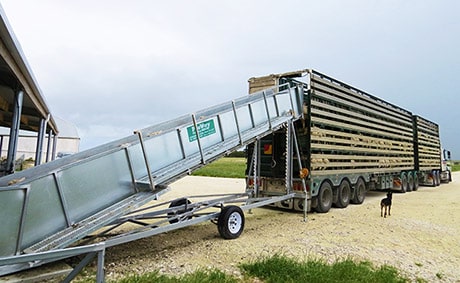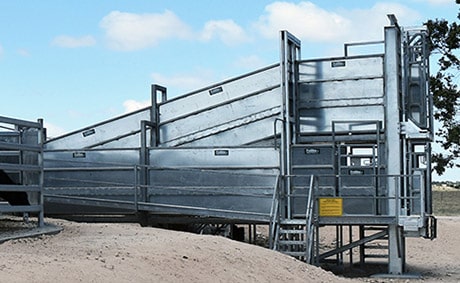Since 2000, ProWay has been designing, manufacturing and installing state of the art livestock facilities and equipment.
We’re able to provide livestock producers and processing facilities with the most user-friendly products available because of our commitment to three things:
- Research: all facilities and equipment we create is backed by relevant research that informs what the market needs and how we can produce something that satisfies a demand;
- Development: when a product is in development stage, we get it tested by the producers that will use it day-in, day-out. This means we’re confident ProWay facilities and equipment have passed the customer test before they’re commercially available; and
- Safety: handler and animal safety has always been a priority for us and we continually investigate ways in which we can ensure staff remain safe in their workplace.
In fact, we’ve previously worked with ALRTA to develop a national Guide for Safe Design of Livestock Loading Ramps and Forcing Yards which promotes safer workplaces for people in contact with livestock loading facilities and to improve animal welfare outcomes.
The work we’ve conducted with ALRTA informs our thinking and is the linchpin in providing a product that meets market demand and operates safely and efficiently.
ALRTA Ramp Guide
Why safety is important when loading or unloading livestock
A research report titled Hospitalised Farm Injury, Australia produced by Flinders University and supported by the Australian Institute of Health and Welfare suggested that ‘almost 22,000 people were hospitalised in the period from 2010–11 to 2014–15 as a result of injury which occurred on a farm.’
While not all hospitalisations would have been loading or unloading related, it highlights the point that livestock production is a dangerous workplace. Traditionally, loading or unloading cattle or sheep is when accidents or injury is most likely to occur during the transportation process.
Australian Government statutory agency, Safe Work Australia states:
“Cattle handling can present significant risks to workers, including injuries and fatalities, for example from being crushed, gored, trampled, hit or bitten by cattle.”
If livestock become frightened, they can act in an unpredictable way. Poorly designed infrastructure and relaxed safety procedures only amplify the potential dangers farm staff face when carrying out their day-to-day tasks.
Possible safety issues (and how to correct them)
When developing a national Guide for Safe Design of Livestock Loading Ramps and Forcing Yards with ALRTA, we detailed several potential safety risks handlers need to be conscious of.
As explained in the guide, here are some of the most common:
| Hazard | Risk | Controls |
|---|---|---|
| Poor vehicle access to loading point |
|
|
| Loading ramp too wide allowing stock to baulk or turn around |
|
|
| Climbing over rails and gates |
|
Self-closing, inward-opening, 600mm wide, personal access or “man” gates with slam shut catches, strategically located provide safe access to working areas. For example (but not limited to) from the rear of the forcing yard to the walkway. |
The loading and unloading ramps ProWay produce
Each year, ProWay build more than 200 loading ramps that are state of the art and exceed industry expectations and guidelines.
Some of our most popular cattle loading ramps are the 12.5 loading ramp (with extension), Adjustable under and over cattle loading ramp and the 12.5 loading ramp and dump.
While commonly purchased sheep ramps include the 3.3m mobile adjustable floor loading ramp and the 8.0m heavy duty mobile adjustable loading ramp.
All our loading ramps are Australian manufactured and designed. Our customisation capabilities, mean our library of cattle and sheep loading ramps is extremely vast.
Despite ProWay adopting industry best practice when it comes to design and safety, we will always continue to investigate ways in which we can keep livestock handlers and staff safer while on the job.
We’ve recently been involved in a trial of a parallel access landing (PAL) platform at Kilcoy Global Foods. The PAL stops drivers having to climb up the sides or on top of trailers or crates to open gates and unload livestock. Traditionally this has been a major contributor to handler injury. We’ve designed our PAL to move alongside livestock trailers to mitigate further danger to handler, animal and truck.
The improvement in productivity and, most importantly, safety has been astounding for B-double stock crate operators unloading cattle at the trial site in Queensland.
We believe the PAL has potential to be our most efficient and safest loading ramp yet.
If your farming operation requires state of the art loading ramps to improve safety and increase profitability, ProWay has the solution for you.
ProWay is the choice of livestock professionals.
Read more on Crate PAL: 12 week trial of a user-pays Crate Parallel Access Landing (Crate PAL) proves successful.




